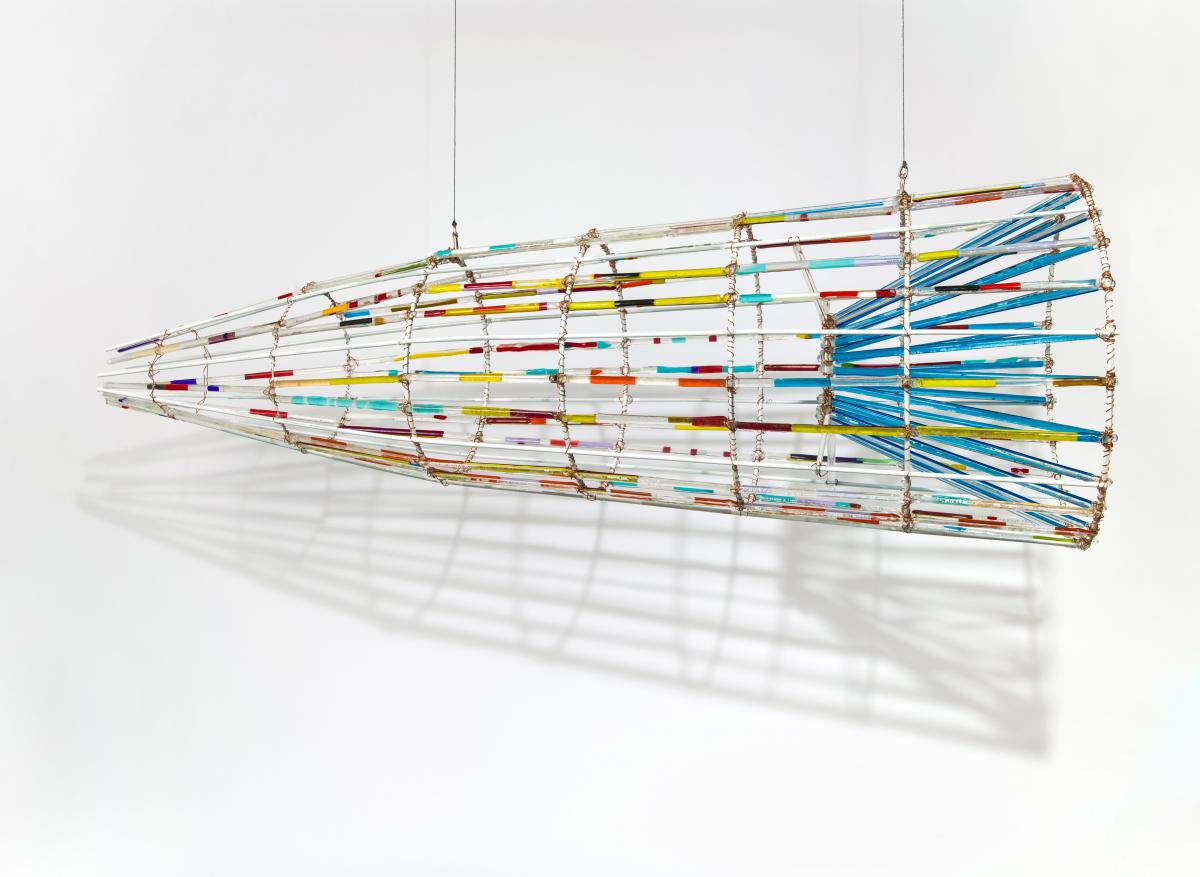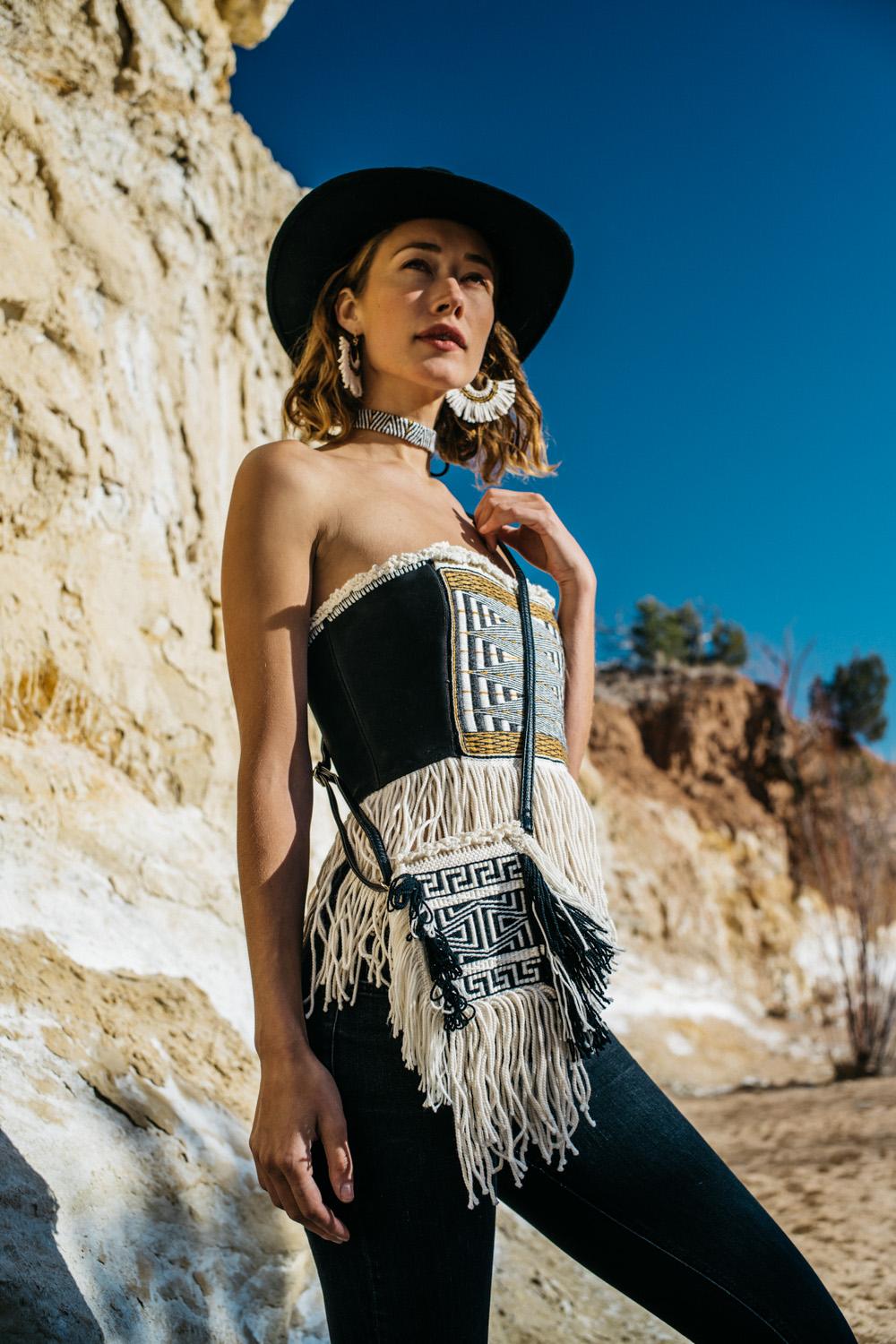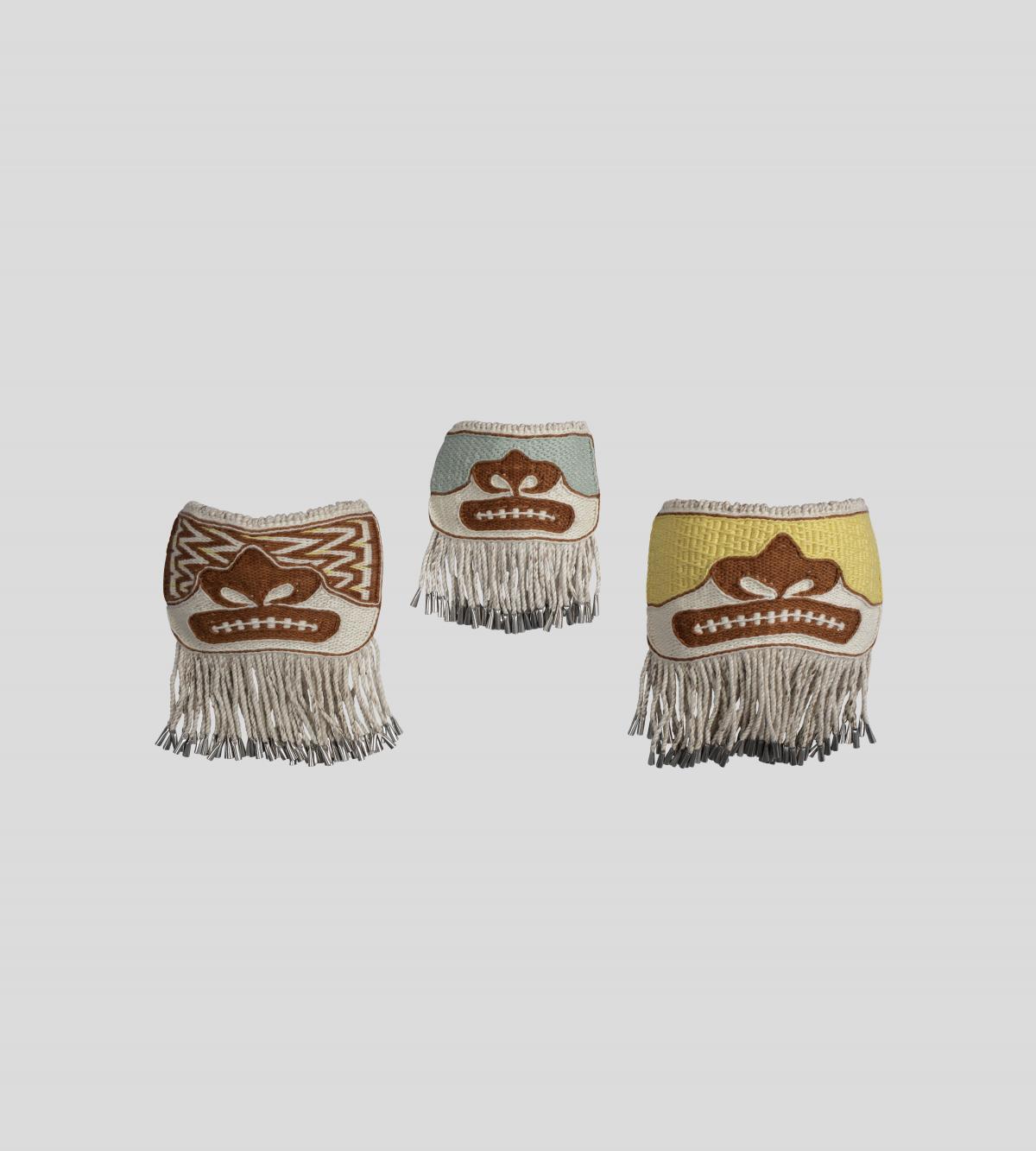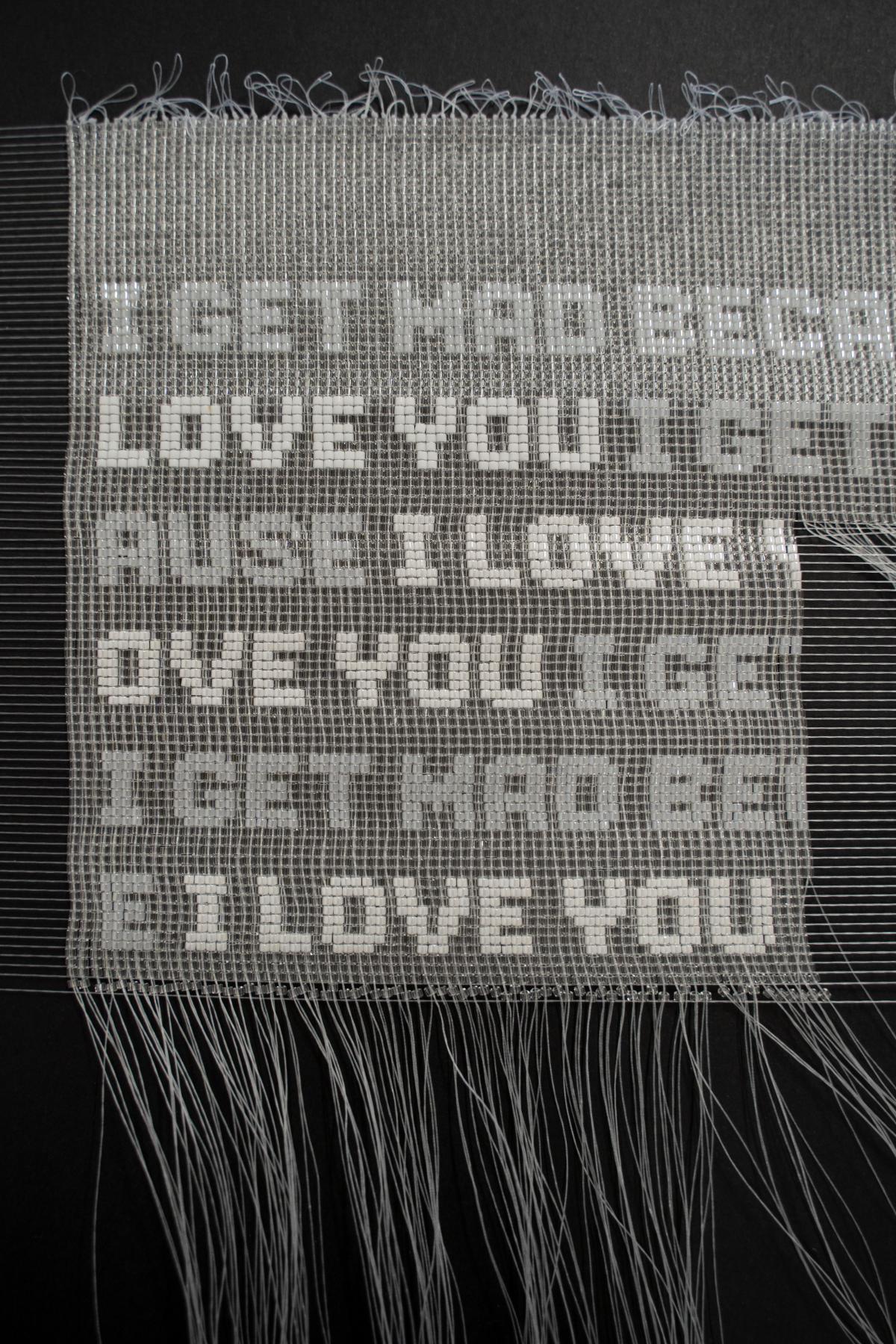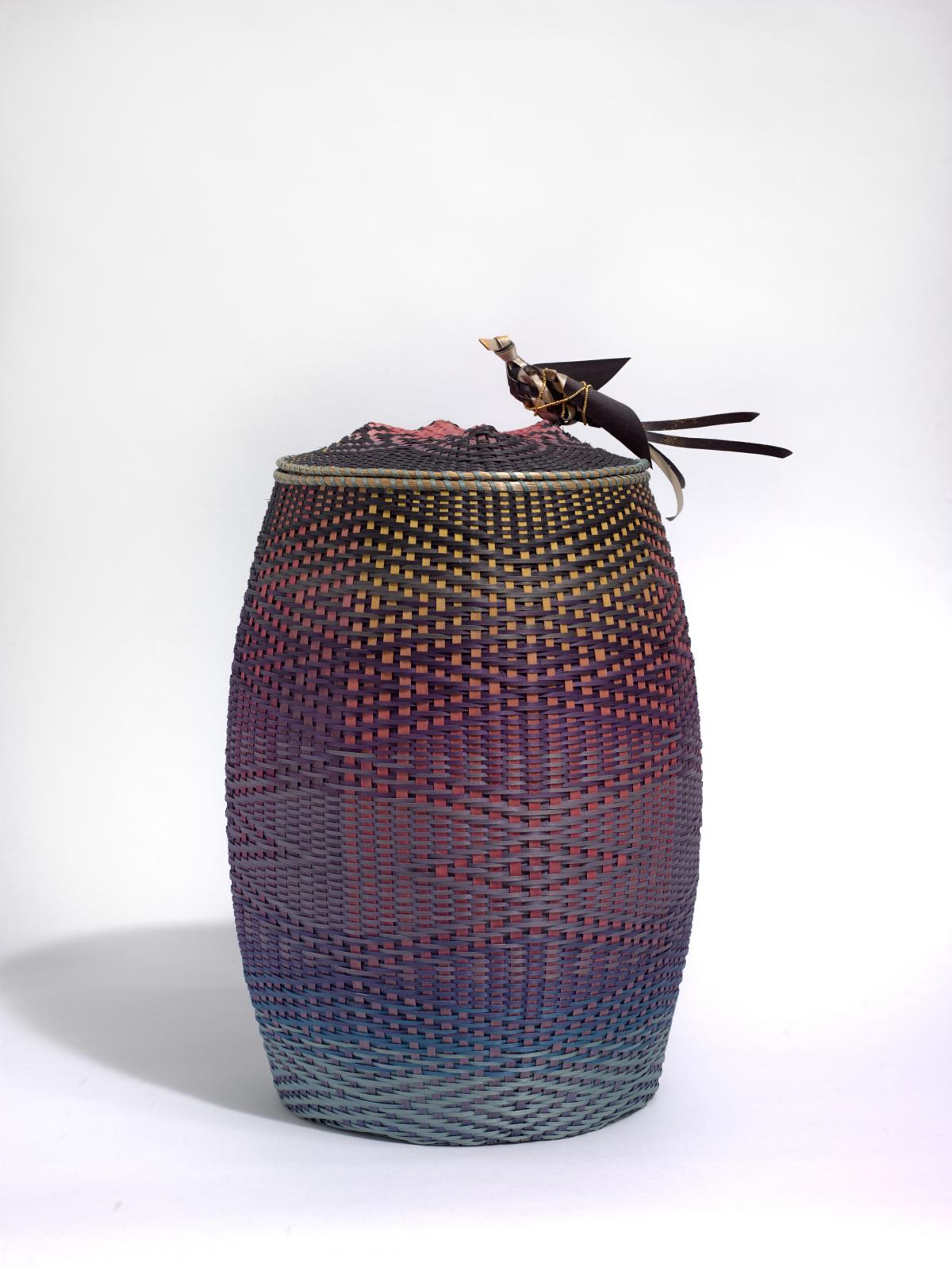What do we carry with us, literally and metaphorically? How and why do we carry it? We can be burdened by grief, by our personal histories, and by history writ large. Yet some kinds of burdens can be precious to us. We carry them with love and pride and share them with each other. There is a tendency to think of “honors” as recognition bestowed on individuals by institutions, such as the military, educational institutions, or business entities. However, many of the works in this exhibition arise from traditions of making items that are essential to honoring family, community, moiety, or clan, and they require broad community practices. The works in Sharing Honors and Burdens: Renwick Invitational 2023 help us think about honors and burdens through beautifully crafted artworks, large and small, in stillness and in movement.
The artists in this tenth installment of the Renwick Invitational were selected in the summer of 2021, when Dr. Anya Montiel (Mexican/Tohono O’odham descent), curator at the Smithsonian’s National Museum of the American Indian, organized a jurying process with me and Miranda Belarde-Lewis (Zuni/Tlingit), the inaugural Joseph and Jill McKinstry Endowed Faculty Fellow in Native North American Indigenous Knowledge at the University of Washington’s Information School. For the first time, the artists selected for the Renwick Invitational are all Native Americans and Alaska Natives.
We considered many artists for this exhibition; there is a deep well of skilled, dedicated Native artists who deserve wider recognition. As we discussed our selections—Joe Feddersen (Arrow Lakes/Okanagan), sisters Lily Hope (Tlingit) and Ursala Hudson (Tlingit), Erica Lord (Athabaskan/Iñupiat), Geo Neptune (Passamaquoddy), and Maggie Thompson (Fond du Lac Ojibwe)—we found our way toward two related themes that link these artists’ practice and artwork: honors and burdens.
Each artist uses traditional forms of making—weaving, beading, or sewing—and adapts the materials and techniques to create contemporary works of art. It is an honor to continue these traditions, but the artists also bear a burden of responsibility; they must constantly weigh the risks and benefits involved in adapting historical practices to new uses. The artworks themselves make tangible the range of honors and burdens we carry with us, from the grief and trauma of personal and community loss to precious knowledge gained from teachers and ancestors.
The complicated histories of Native Americans and the incredible cultural diversity among the more than five hundred tribes of North America make it irresponsible to collapse them all into an easy relationship with craft art, especially if we are connecting them to American craft. The artists presented in this Renwick Invitational are members of separate sovereign Nations: Tlingit and Haida Tribes of Alaska, Nenana Native Association, Wabanaki Confederacy, Okanagan Nation, and Fond du Lac Band of Lake Superior Chippewa. Each artist works in some manner with techniques, materials, or concepts embedded within their tribe’s customary practices and history, but they also intend their work to engage with global audiences and must deliberately navigate questions around which aspects are suitable to share with outside audiences and which are not. The works of many Native artists are conscious efforts to continue cultural values. Finding our way through deep histories and working out how we want to shape the future is a heavy responsibility that is both an honor and a burden.
Making is not only a form of self-expression but also a powerful way to process everyday life and express ties to community. Through making, an artist contributes to an expansive corpus of knowledge, often balancing customary functional forms with beauty and personal narrative. The inspirations for some of the works included in this Invitational are containers that literally hold, store, or carry important items. In their new iterations, customary materials, forms, and practices have been adapted by the artists to speak to issues that particularly impact Native American communities.
The continuation of craft traditions is a cherished responsibility. The art world at large expects artmaking to be a specialized activity practiced only by an elite few, but craft traditions depend on broader community participation, or they cease to be traditions. The artists in Sharing Honors and Burdens come from communities in which making is an honored way of coming to know. Making things for ourselves helps us understand abstract concepts and relationships. When people gather to learn weaving traditions, for example, social ties are formed and strengthened. Working with materials from nature links the practitioners to the stewarding of natural resources. Anyone who endeavors to make their own items with skill and care is putting their hands, their mind, and their time into gaining knowledge and carrying that knowledge into the future.
The artists of Sharing Honors and Burdens are deliberately making objects that evoke history, analyze the present moment, and bring cultural knowledge into the future. The burdens we carry are not always negative; some are chosen and held with pride and dedication. The honors are not simple celebratory recognitions of past achievements; they mark changes in responsibilities and shifting relationships. The making changes the maker. The sharing changes us all.
Sharing Honors and Burdens: Renwick Invitational 2023 is on view at SAAM’s Renwick Gallery May 26, 2023 through March 31, 2024. This story is drawn from the exhibition catalogue.
Lara Evans (Cherokee Nation), founding director of the Research Center for Contemporary Native Arts at the Institute of American Indian Arts in Santa Fe, New Mexico, and current vice president of Programs for First Peoples Fund, is the guest curator.















